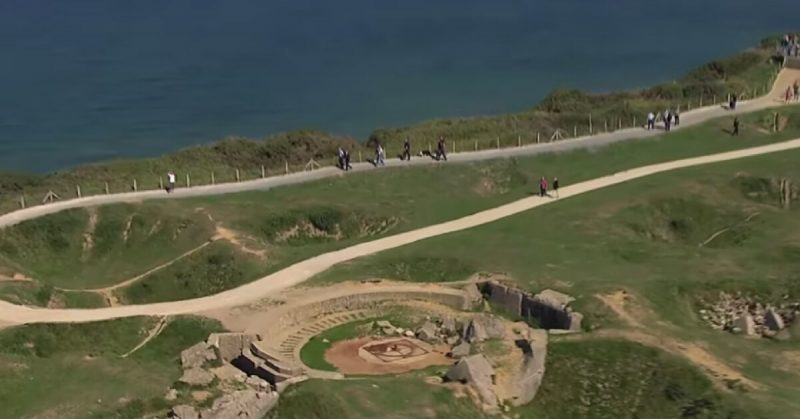Pointe du Hoc is on the coast of Normandy (Northern France) and overlooks the English Channel. The German army had control of this crucial area and had fortified it well against attacks.
On the morning of D-Day (June 6th, 1944) the United States Army Ranger Assault Group landed at the base of the cliffs and scaled the 100-foot cliff face. They were able to do this thanks to rocket launchers that had been fitted to their landing craft; they used these to fire ropes and grapnels up the cliffs. Their aim was to take control of crucial German artillery that could be used against American troops that were landing on nearby beaches.
Once at the top of the cliffs, they found that the artillery they were in search of was not in the bunkers; where they had been expected to be. This caused them to send out a patrol to hunt the weaponry down; these were found and disabled, using thermite grenades to destroy the firing mechanisms.
The U.S. Rangers had to fend off attacks from the German 914th Grenadier Regiment while not losing the ground they’d gained; this was the costliest part of the battle. Back-up, in the form of the 5th Ranger Battalion and part of the 116th Infantry Regiment, moved from Omaha Beach toward Pointe du Hoc from. Unfortunately, of these soldiers, only 23 Rangers from the 5th Battalion managed to reach them.
Throughout the night the Rangers were herded into a small enclave further along the cliff by the Germans and several Rangers were taken prisoner. The following morning, June 8th, further troops managed to get to Pointe du Hoc to relieve the Rangers; these were made up of the 1st battalion, the 2nd, and 5th Rangers, and the 116th Infantry – as well as tanks from the 743rd Tank Battalion.
Pointe du Hoc is now a popular tourist spot and holds memories of those fateful days; there is a museum you can visit which is dedicated to this battle. There’s also a monument, World War II Pointe du Hoc Ranger Monument that the French erected in honor of the Second Ranger Battalion and their command Lt. Col. James E. Rudder.
This footage gives you an aerial view of Pointe du Hoc and allows you to see what a struggle the challenge of scaling those cliffs must have been.
